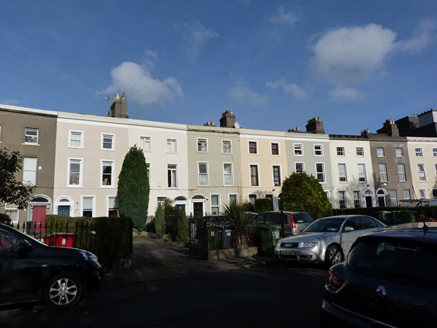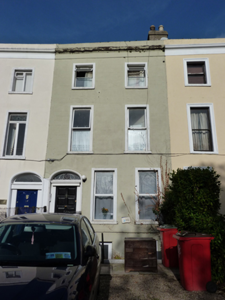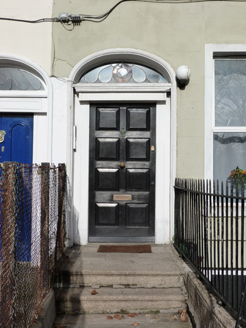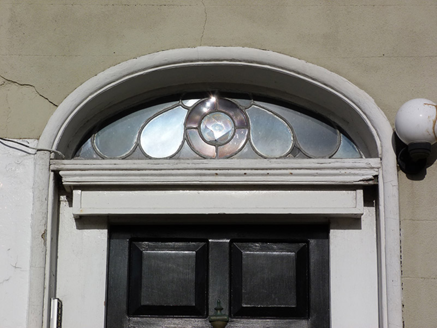Survey Data
Reg No
50120116
Rating
Regional
Categories of Special Interest
Architectural, Artistic
Original Use
House
In Use As
Apartment/flat (converted)
Date
1790 - 1795
Coordinates
318041, 236463
Date Recorded
09/11/2017
Date Updated
--/--/--
Description
Terraced two-pile three-storey former house over raised basement, built 1792 as one of twenty-five, having three-bay ground floor and two-bay upper floors, and with two-bay full-height bow to east end of rear and two-storey return with lower extension to west. Now in use as apartments. M-profile pitched slate roof, hipped to west end, with rendered chimneystacks having clay pots to east end, hidden behind rendered parapet with render cornice and eaves course, and with pitched roof to return. Ruled-and-lined rendered walling with cut masonry plinth course above rendered basement walling. Square-headed window openings with rendered surrounds to upper floors, masonry sills and replacement uPVC windows to front elevation, round-headed stairs window (apparently six-over-six pane timber sash) to rear elevation. Elliptical-headed doorway with moulded render surround, carved timber doorcase comprising frieze and stepped cornice, leaded teardrop fanlight, and replacement timber door, approached by two nosed granite steps and platform with wrought-iron railings on carved granite plinth wall to east. carparking to former front garden, and yard to rear.
Appraisal
This house is part of a significant architectural set-piece, Marino Crescent, one of the few Georgian crescents in the city. The well-designed doorcase, complete with delicate leaded fanlight, adds artistic detailing to the classically restrained façade. The crescent comprises houses with similar parapet heights and fenestration patterns, incorporating larger houses to the centre and west end. The crescent was built in the last decade of the eighteenth century to take advantage of the sea views, prior to land reclamation projects associated with the enlargement of Dublin Port. It was built by Charles ffolliot, reputedly to spite Lord Charlemont, blocking the vista from Marino House, and was locally known as Spite Crescent as a result.







